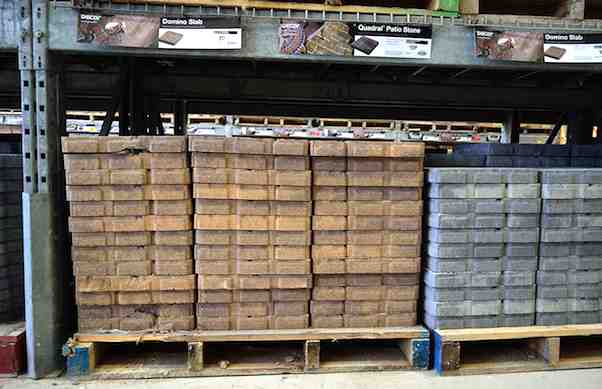
Home Depot’s marketing mix (4Ps) is a changing set of strategies for the company’s products, place/distribution, promotion, and prices, in response to changes in the home improvement retail market. This marketing mix or 4P reflects business efforts to ensure the successful implementation of the company’s marketing strategy. Home Depot’s marketing mix is a strategic approach to keeping the biggest market share while competing against many other firms. The Five Forces analysis of Home Depot shows that the industry involves tough competition. Regarding competition, this marketing mix is a factor in sustaining the company’s leading position in the home improvement retail market.
Home Depot’s marketing mix identifies strategies for market positioning and competitiveness against home improvement retailers, like Lowe’s and Ace Hardware. General merchandise retailers, such as Walmart, Costco, and Amazon, also offer home-improvement products and influence this competitive landscape. Aldi and Whole Foods, which are not direct competitors of Home Depot, affect the market and the suitability of marketing strategies. The strengths shown in the SWOT analysis of Home Depot and the company’s branding support competitiveness for market opportunities.
Home Depot’s Products
The company’s main product is its retail service involving the provision of goods, like tools and equipment. This part of the marketing mix presents the product mix and pertains to organizational outputs offered to target customers. Home Depot’s products are as follows:
- Retail service with expert advice
- Professional and contractor services
- Home improvement goods from third parties and their brands
- Home Depot house brands
Considering the home improvement retail business, Home Depot’s main product is its retail service, which includes organizing and packaging goods, as well as advice from field experts, like carpenters and plumbers at the company’s stores. Also, the company’s products include services for home improvement professionals and contractors. This part of the marketing mix highlights service quality, which is emphasized in Home Depot’s company culture (business culture). On the other hand, the majority of goods at the firm’s stores are from third parties, such as equipment manufacturers. The firm is an exclusive seller of some of these brands. Moreover, Home Depot has its own company-owned or house brands, such as Husky (tools) and Glacier Bay (fixtures).
Place/Distribution in Home Depot’s Marketing Mix
The company’s main places for sales are its stores. This part of the marketing mix shows Home Depot’s strategy for distributing its products. Home Depot’s place or distribution strategy involves the following, arranged according to significance:
- Warehouse-style stores
- E-commerce websites
- Home Depot mobile apps
Home Depot’s warehouse-style stores are where most sales transactions occur. However, the company also generates revenues through its e-commerce websites, where customers can place their orders for delivery or for store pick-up. Home Depot also offers mobile apps that customers can use to locate stores and to place online orders. This part of the retail company’s marketing mix shows that the business maximizes its reach to the target market by integrating online technology. The combination of brick-and-mortar operations and e-commerce services in this marketing mix is a result of strategic goals derived from Home Depot’s mission statement and vision statement, which support a seamless shopping experience for the broadest product selection.
Home Depot’s Promotion
Home Depot uses all types of tactics for its marketing communications strategy to promote its business and products. This part of the marketing mix refers to the promotional mix of communication activities used to engage target buyers. Home Depot’s promotion activities include the following tactics:
- Advertising (TV commercials, etc.)
- Personal selling (store personnel)
- Sales promotions
- Public relations
- Direct selling (contractors)
TV commercials are the most prominent promotion tactic in this case, although the company also uses ads on other media, such as print and online media. In addition, Home Depot’s store personnel are major contributors to the business by promoting products and services to customers. Also, the company uses sales promotions in the form of deals and special offers. In terms of public relations, this marketing strategy involves The Home Depot Foundation and other corporate social responsibility programs, as well as the company’s sponsorship of athletic teams. The firm also engages in a form of direct selling that targets professionals and contractors. Thus, the promotion activities in Home Depot’s marketing mix are diverse and comprehensive.
Prices and Pricing Strategy in Home Depot’s 4P
Home Depot uses the Everyday Low Price (EDLP) strategy for setting its price ranges and price points. The company’s first stores advertised “Everyday Low Price” to attract customers. This pricing strategy remains and aligns with Home Depot’s generic competitive strategy and intensive growth strategies. With these strategies, the firm continues to offer the lowest prices possible, although its current emphasis is high-quality service, including expert advice, to attract more customers to Home Depot stores.
References
- Kucuk, S. U. (2023). Marketing and Marketing Mix. In Visualizing Marketing: From Abstract to Intuitive (pp. 7-13). Cham: Springer International Publishing.
- Park, J., Hong, E., & Park, Y. N. (2023). Toward a new business model of retail industry: The role of brand experience and brand authenticity. Journal of Retailing and Consumer Services, 74, 103426.
- Solberg, C. A., & Durrieu, F. (2023). Patterns of international marketing strategy. Journal of Business & Industrial Marketing, 38(7), 1532-1544.
- The Home Depot E-Commerce Website.
- The Home Depot Foundation.
- The Home Depot, Inc. – Form 10-K.
- The Home Depot, Inc. – Professional and Contractor Services.
- U.S. Department of Commerce – International Trade Administration – Retail Trade Industry.